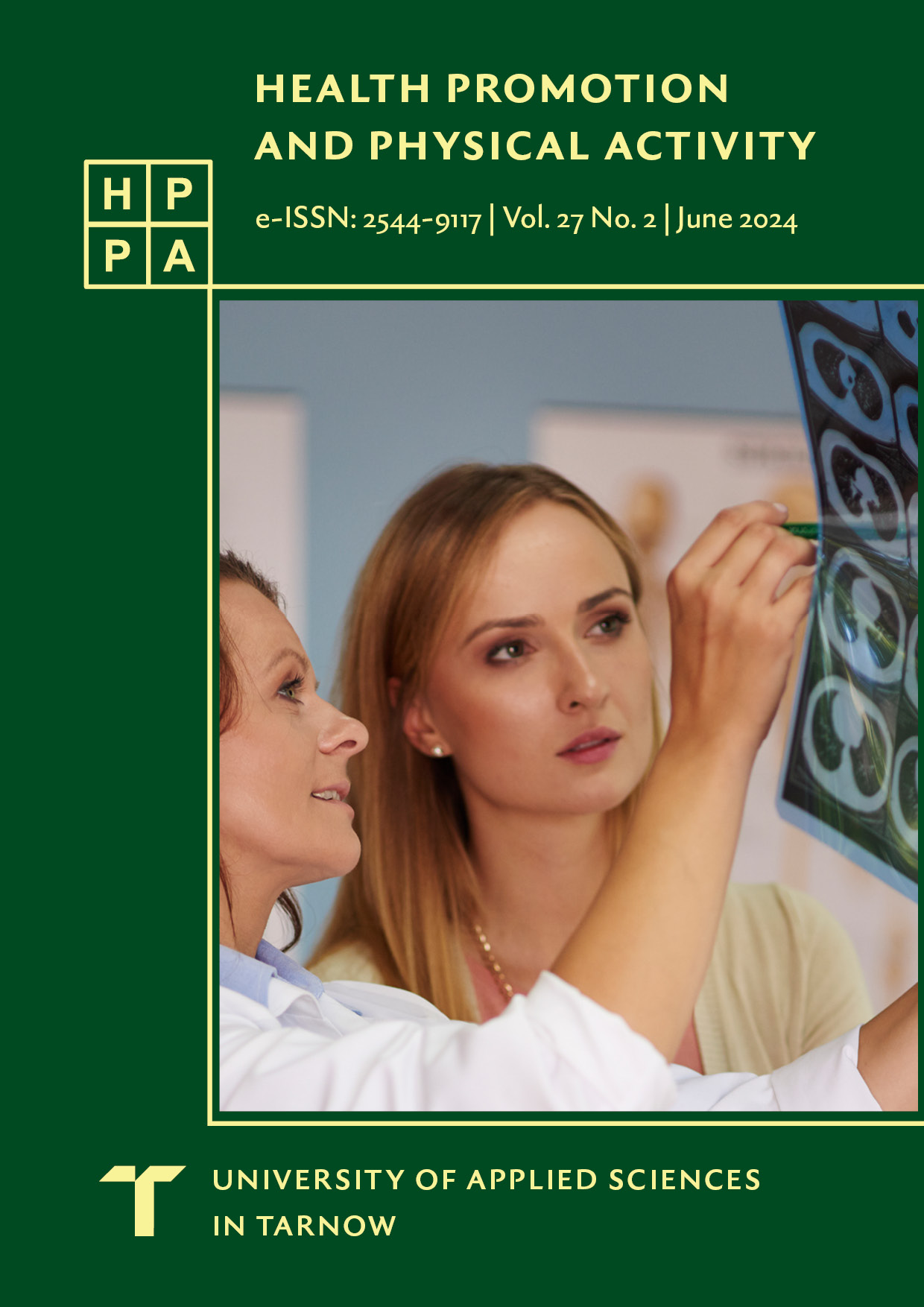Technology for enhancing clinical skills
Evaluation of a prototype application for training in donning and doffing
DOI:
https://doi.org/10.55225/hppa.577Keywords:
clinical simulation, artificial intelligence (AI), donning and doffing, nurse training, personal protective equipmentAbstract
The COVID-19 pandemic has brought about significant challenges in preparing nursing students with specific skills required in clinical settings. Amongst the major challenges faced was ensuring students are well prepared in the technique of donning and doffing to ensure infection control, avoid contamination and reduce unnecessary anxiety. A descriptive qualitative approach was used to study the experience of 14 student nurses who participated in a donning and doffing practical session prior to start of their clinical practice placement, including the use of a prototype application using AI. Purposive sampling was adopted and the data from individual interviews was analysed using thematic analysis. Four themes emerged, namely: an Engaging Tool for Learning; Reducing the Chance of Error; Building Self-Confidence; and Eliminating the 'Buddy System'. The early prototype generated positive themes, and its use in the educational setting to prepare students prior to clinical placement is encouraging and emphasises the importance of integrating technology in training with healthcare students.
Downloads
References
Zhu N, Zhang D, Wang W, et al. [China Novel Coronavirus Investigating and Research Team]. A Novel Coronavirus from Patients with Pneumonia in China, 2019. N Engl J Med. 2020;382(8):727-733. doi: 10.1056/NEJMoa2001017. DOI: https://doi.org/10.1056/NEJMoa2001017 Google Scholar
WHO. 2019 Novel Coronavirus (2019-nCoV): Strategic Preparedness and Response Plan. Geneva: World Health Organization; 2020. https://www.who.int/publications/m/item/covid-19-strategy-update. Published April 14, 2020. Accessed February 1, 2024. Google Scholar
Panuganti BA, Pang J, Califano J, Chan, JYK. Procedural precautions and personal protective equipment during head and neck instrumentation in the COVID-19 era. Head Neck. 2020;42(7):1645-1651. doi: 10.1002/hed.26220. DOI: https://doi.org/10.1002/hed.26220 Google Scholar
Ortega R, Gonzalez M, Nozari A, Canelli R. Personal protective equipment and COVID-19. N Engl J Med. 2020;382(26):e105. doi: 10.1056/NEJMvcm2014809. DOI: https://doi.org/10.1056/NEJMvcm2014809 Google Scholar
Cook TM. Personal protective equipment during the coronavirus disease (COVID) 2019 pandemic – a narrative review. Anaesthesia. 2020;75(7):920-927. doi: 10.1111/anae.15071. DOI: https://doi.org/10.1111/anae.15071 Google Scholar
Phan LT, Maita D, Mortiz DC, et al. Personal protective equipment doffing practices of healthcare workers. J Occup Environ Hyg. 2019;16(8):575-581. doi: 10.1080/15459624.2019.1628350. DOI: https://doi.org/10.1080/15459624.2019.1628350 Google Scholar
Prokopenko M, Pissaridou MK, Risk O, Khatkar H. Evaluating healthcare worker competence in the correct use of personal protective equipment in the COVID era: A quality improvement project. Cureus. 2020;12(12): e11954. doi: 10.7759/cureus.11954. DOI: https://doi.org/10.7759/cureus.11954 Google Scholar
Hossain MA, Rashid MUB, Khan MAS, Sayeed S, Kader MA, Hawlader MDH. Healthcare workers’ knowledge, attitude, and practice regarding personal protective equipment for the prevention of COVID-19. J Multidiscip Healthc. 2021:14:229-238. doi: 10.2147/JMDH.S293717. DOI: https://doi.org/10.2147/JMDH.S293717 Google Scholar
Braun V, Clarke V. Using thematic analysis in psychology. Qual Res Psychol. 2006;3(2):77-101. doi: 10.1191/1478088706qp063oa. DOI: https://doi.org/10.1191/1478088706qp063oa Google Scholar
Guba EG. Criteria for assessing the trustworthiness of naturalistic inquiries. ECTJ. 1981;29(2):75-91. doi. 10.1007/BF02766777. DOI: https://doi.org/10.1007/BF02766777 Google Scholar
Merilampi S, Leino M, Jyräkoski T, et al. Co-designing a hybrid game for training use of proper personal protective equipment in different clinical scenarios. In: 2021 IEEE 9th International Conference on Serious Games and Applications for Health (SeGAH). Dubai: IEEE; 2021:1-6. doi: 10.1109/SEGAH52098.2021.9551905. DOI: https://doi.org/10.1109/SEGAH52098.2021.9551905 Google Scholar
NIOSH. (2014). The Buddy System [NIOSH Fact Sheet]. Cincinnati, OH: U.S. Department of Health and Human Services, Public Health Service, Centers for Disease Control and Prevention, National Institute for Occupational Safety and Health. https://www.cdc.gov/vhf/ebola/pdf/buddy-system.pdf. Published 2014. Accessed February 1, 2024. Google Scholar
Marks S, Edwards S, Jerge EH. Rapid deployment of critical care nurse education during the COVID-19 pandemic. Nurse Lead. 2021;19(2):165–169. doi: 10.1016/j.mnl.2020.07.008. DOI: https://doi.org/10.1016/j.mnl.2020.07.008 Google Scholar
Haji JY, Subramaniam A, Kumar P, Ramanathan K, Rajamani A. State of personal protective equipment practice in Indian intensive care units amidst COVID-19 pandemic: A nationwide survey. Indian J Crit Care Med. 2020;24(9):809-816. doi: 10.5005/jp-journals-10071-23550. DOI: https://doi.org/10.5005/jp-journals-10071-23550 Google Scholar
Rajamani A, Subramaniam A, Shekar K, et al. Personal protective equipment preparedness in Asia-Pacific intensive care units during the coronavirus disease 2019 pandemic: A multinational survey. Aust Crit Care. 2021;34(2):135-141. doi: 10.1016/j.aucc.2020.09.006. DOI: https://doi.org/10.1016/j.aucc.2020.09.006 Google Scholar
Downloads
Published
How to Cite
Issue
Section
License
Copyright (c) 2024 Neville Schembri

This work is licensed under a Creative Commons Attribution-ShareAlike 4.0 International License.









